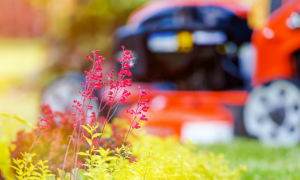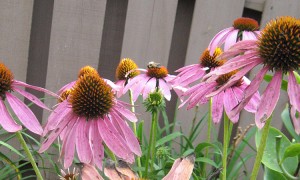Guest post by Rose Weber
As the seasons change, you should be enjoying the changing weather and scenery that come with the time of year. Unfortunately, during the spring and fall months in particular, millions of Americans are faced with a myriad of health problems that are brought on by the same culprits responsible for the seasonal beauty–plants.
Common allergy symptoms include runny nose and congestion, itchy eyes, sneezing, and swollen skin. You might have post nasal drip or even feel more tired than normal. If you’re an allergy sufferer, you’re not alone. Educate yourself on the most common plants to be aware of as the seasons change, and you’ll be one step closer to keeping yourself healthy throughout the year.
1. Ragweed
Ragweed is arguably the most common trigger of seasonal allergies in North America, about one in five people suffers from a serious ragweed allergy. Ragweed counts are worse on hot, windy, or exceptionally dry days, with the highest levels of pollen being produced in mid-September. However, depending on the weather and the geography of the area in which you live, ragweed season can stretch from late July all the way to Thanksgiving.
2. Oak
Oak is grown all over the country, and many people prize these statuesque beauties for their ornamental value, making them common in residential landscaping as well as in recreational parks. However, many people are allergic to this plant’s pollen, and even if your own property doesn’t have oak on it, there’s a strong likelihood that some can drift by from a neighboring lot.
3. Mountain cedar
Mountain cedar, technically a juniper, is part of a huge plant variety. There are dozens of trees and shrubs in this grouping that can cause allergic symptoms in people–and you might not be allergic to all types, either. Mountain cedar, however, are some of the most common trees, and one that should be on any allergy sufferer’s radar.
Juniper is common throughout most of the country, and it has a long pollen season. In some states, allergy season starts in January, and can last all the way into late June.
4. Elm
Elm trees grow in every state in the United States, except for those with harsh winters. These trees produce their pollen in the fall and can cause serious symptoms like sneezing and watery eyes.
5. Grass pollens
There are dozens of grass types that can produce allergic symptoms, and it’s difficult for allergists to test different strains of grass. There are a handful of grass species that are significantly more likely to induce allergies than others.
Bermuda grass is a common culprit. This grass type is frequently grown on residential lawns in southern states such as Texas, and produces pollen when grass blades reach half an inch in height. It can grow throughout most of the year, producing serious problems for allergy sufferers.
Bluegrass is another common trigger. It tends to produce pollen in the summer months, and this grass type is commonly used on lawns throughout the United States. Other common grass allergens include johnson grass and ryegrass.
6. Birch
Birch is a common allergy in the spring, as these plants begin to spread their pollen. These are easy trees to spot. Birch trees have distinguishing white bark with black stipples, and can be found throughout most of the United States. They are less common in the southern and western portions of the country, but their pollen is especially potent because many people tend to plant these trees as a landscaping feature. While they are beautiful to look at, beware of their sneeze-inducing potential.
7. Poplar
These trees also produce pollen in the spring, and can be grown just about anywhere in the country. Their pollen is much more likely to trigger allergies in warmer climates as well as those in more polluted areas, but luckily, only the male trees make pollen. Poplar are great landscaping trees, being well-adapted to many soil types, so if you want to enjoy a beautiful yard without the running nose, consider planting female varieties instead.
While there’s not much you can do to eliminate an allergy, you can work to treat your allergies. Although growing research suggests that immunotherapy, or “allergy shots,” may be an option for reducing the body’s histamine response to certain allergens.
You can also consider taking an over-the-counter allergy medicine or antihistamine long before the allergy season begins. Limit your exposure to allergens by staying inside on warm, windy days, and use saline to help flush the allergens from your nose.
Another option is to get yourself tested at an allergist’s office to help determine which of these pollens produces the strongest allergic response. Once you are armed with this information, you will have a much healthier–and more enjoyable–allergy season next year.
Rose Weber is a garden care extraordinaire. She has been gardening since she was a child in and loves to spend her weekends teaching her grandchildren all about growing a vegetable patch. You can find her sharing her crop with her friends and neighbours.






